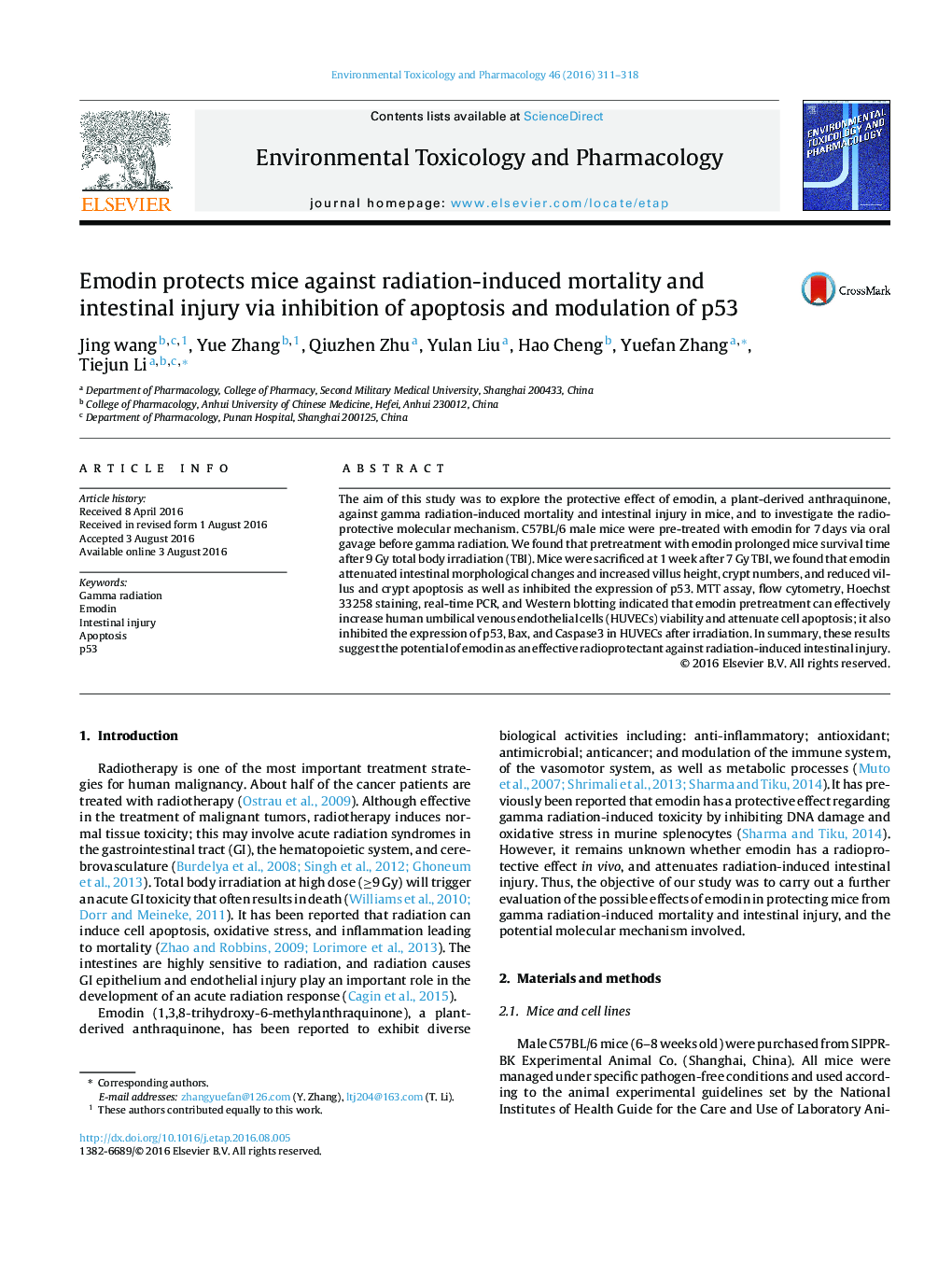| Article ID | Journal | Published Year | Pages | File Type |
|---|---|---|---|---|
| 2582843 | Environmental Toxicology and Pharmacology | 2016 | 8 Pages |
•Emodin, an anthraquinone, protects gamma radiation-induced mortality in mice.•Emodin protects mice against gamma radiation-induced intestinal injury.•Emodin increases viability and inhibits apoptosis in HUVECs after radiation.•Emodin suppresses the apoptotic signaling pathway in HUVECs after irradiation.
The aim of this study was to explore the protective effect of emodin, a plant-derived anthraquinone, against gamma radiation-induced mortality and intestinal injury in mice, and to investigate the radioprotective molecular mechanism. C57BL/6 male mice were pre-treated with emodin for 7 days via oral gavage before gamma radiation. We found that pretreatment with emodin prolonged mice survival time after 9 Gy total body irradiation (TBI). Mice were sacrificed at 1 week after 7 Gy TBI, we found that emodin attenuated intestinal morphological changes and increased villus height, crypt numbers, and reduced villus and crypt apoptosis as well as inhibited the expression of p53. MTT assay, flow cytometry, Hoechst 33258 staining, real-time PCR, and Western blotting indicated that emodin pretreatment can effectively increase human umbilical venous endothelial cells (HUVECs) viability and attenuate cell apoptosis; it also inhibited the expression of p53, Bax, and Caspase3 in HUVECs after irradiation. In summary, these results suggest the potential of emodin as an effective radioprotectant against radiation-induced intestinal injury.
